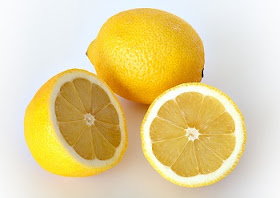 |
| If life gives you lemons, you have citric acid |
Lawrence opened with a discussion of pH filled with blithe misinterpretations such as
"Chemicals can be loosely divided into two extremes: acids and bases." [and]
"Water, for example, has a pH of 7 and is considered neutral (neither acid nor base)...."
...neither of which is technically correct: a pH measurement places a solution on the acid-alkaline scale, not a chemical, and only pure water has a pH of 7.That's apparently close enough for eHow, even if it's at best an oversimplification and at worst utter bushwa. Where George truly earned the ire of our researcher, however, was his next statement:"You can determine the pH of a chemical by using a pH indicator strip and checking the strip's color to a pH chart. For fun, measure [bolding ours] the pH of lemon juice."Did you catch that? We did: George was supposed to explain how to calculate the pH of lemon juice, not measure it. Dumbass. |
Well, we looked online and found a couple of places that explain the process of calculating the pH of a solution. Here's one from a Purdue University chemistry lab, a much more likely place to find such an answer than in an English class. We won't go into all the dirty details, but we'll just say that it's a bit more of a calculation than Lawrence's answer entails:
- Dip [a] pH indicator strip into a glass of lemon juice...
- Wait for the pH indicator strip to change color...
- Compare the color of the pH indicator strip to your pH color chart...
Instead of demonstrating knowledge of chemistry and posting a method of calculating the pH of a solution, Lawrence instead posted a method of measuring pH that you can find on the back of any swimming pool test kit. For leaving his readers uninformed after wasting their time reading his twaddle, the Antisocial Network hereby awards George Lawrence, JD, the singular honor of Dumbass of the Day.
copyright © 2016-2021 scmrak
SI - CHEMISTRY
No comments:
Post a Comment